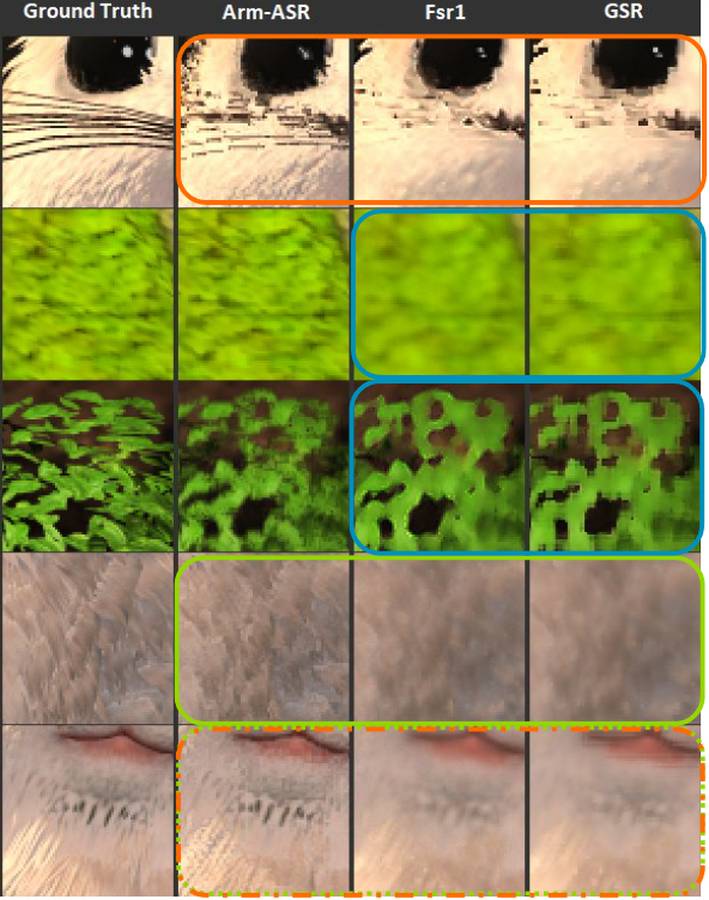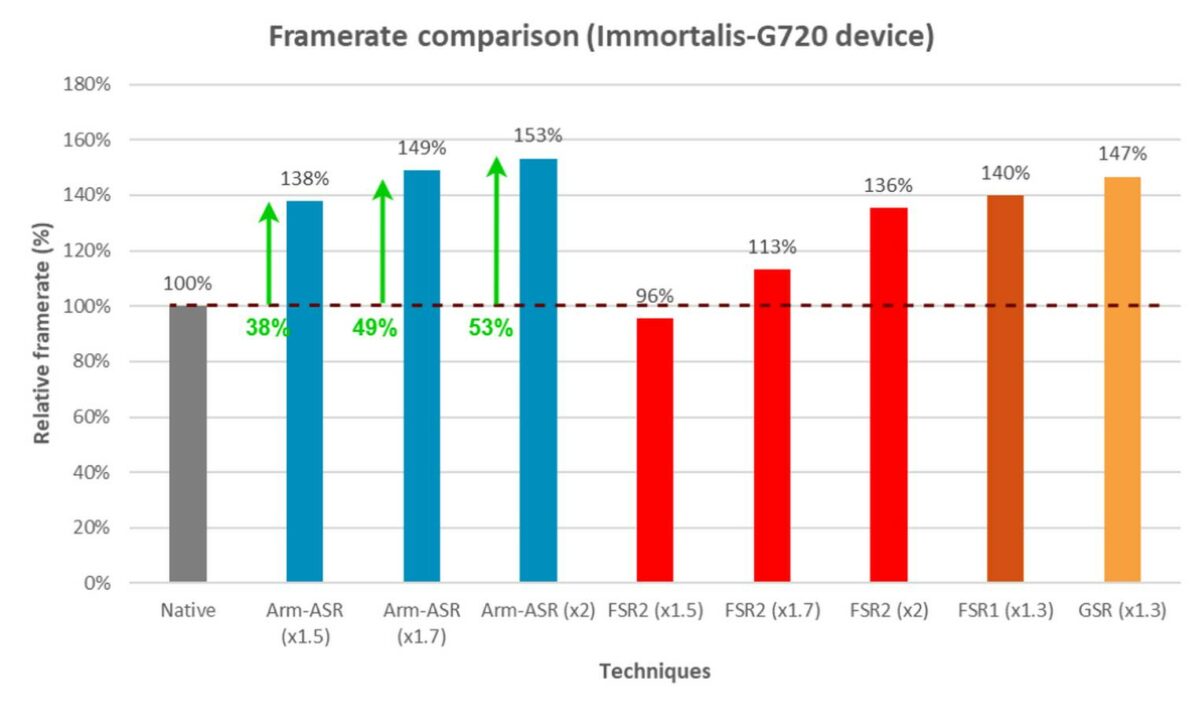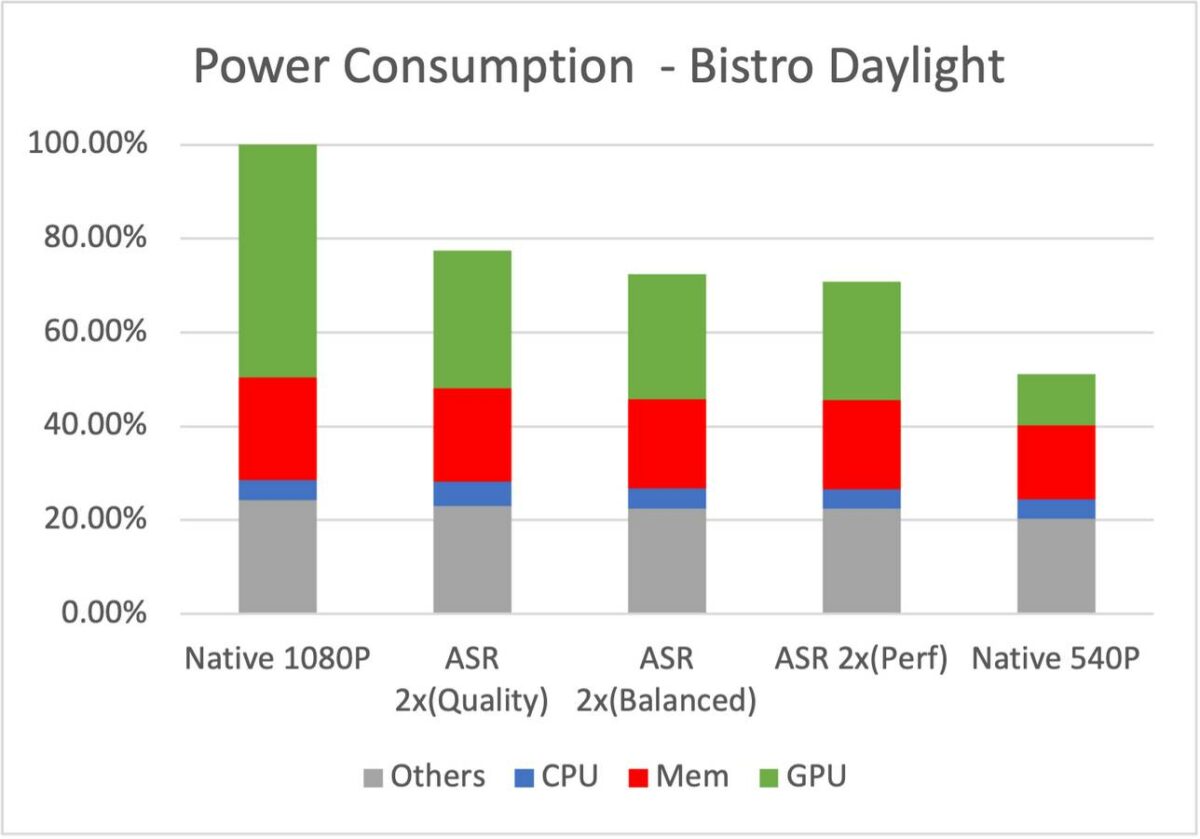Arm has presented its open-source solution for upscaling mobile devices. With it, the brand aims to improve performance while keeping as many details as possible.
Arm ASR (Arm Accuracy Super Resolution) is an upscaling technology that uses a lower resolution frame before applying a technique to scale it up to the screen’s native resolution. To develop its solution, Arm opted for AMD’s FidelityFX Super Resolution 2 (FSR2) as a base. This means that Arm’s ASR upscales the image before adding user interfaces and post-processing effects, like film grain or chromatic aberration, resulting in a more pleasant user experience.

Having FSR 2 as a base means that ASR has access to temporal data, unlike spatial upscalers such as FSR1 and Qualcomm’s Game Super Resolution (GSR). The latter two tend to deliver worse results due to the lack of information from previous frames. This information comes in the form of depth and motion vectors which helps the upscaler to keep more details in the final image. FSR 2 foundations also help adoption as many developers are already familiar with the technology, thus simplifying and encouraging its implementation in mobile games.

Arm announces up to 53% performance increase over native rendering. It also claims that FSR2 is slower in similar scenarios, offering only a 36% uplift. That said, these tests were run on the brand’s Immortalis-G720 GPU based on its 5th Gen architecture, where FSR tends to deliver better performance when paired with a Radeon GPU, as shown by Hardware Unboxed. All this to say that FSR 2 isn’t slower, but rather that Arm managed to tune its upscaler to suit its architecture.
Arm said that the performance of ASR is the result of highly efficient shader code which reduced both GPU load and bandwidth requirements. Another benefit to upscaling technologies on battery-powered devices is a lower GPU load, translating into lower power consumption. In this regard, Arm announced between a 20 and 30% lower power consumption on a MediaTek Dimensity 9300 chip.

Moving to image quality, Arm’s ASR manages to keep a lot of detail in an Unreal Engine demo, much more than FSR 1 and GSR, though still not perfect. According to the shared screenshots, Arm’s ASR is indeed quite effective at retaining details. But comparing it to FSR 1 is not fair since it’s based on FSR 2.
Arm’s ASR will be under an open-source license, allowing all developers to leverage its benefits in their projects. As a first iteration, things seem acceptable, and we have great hopes for its future.
